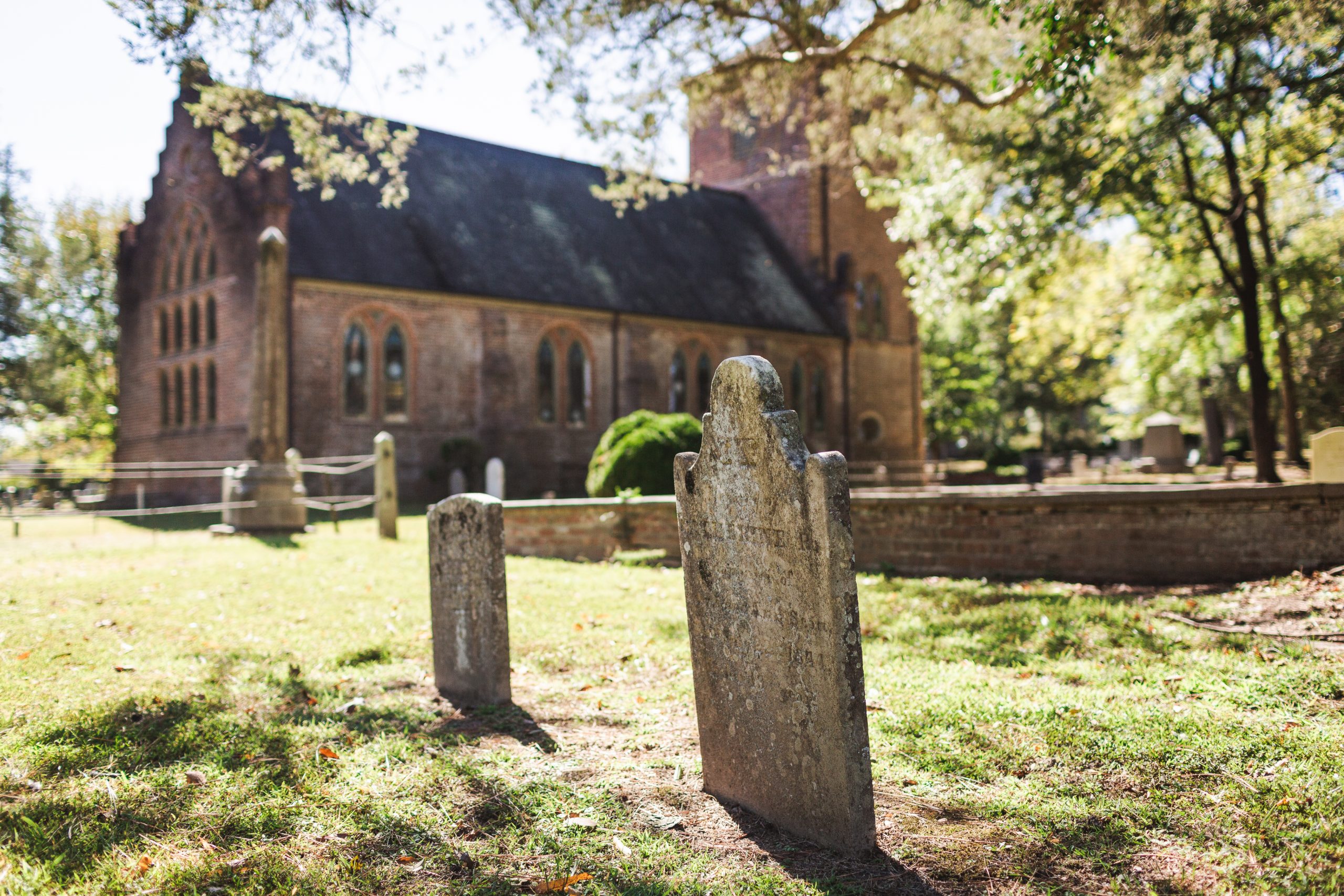
Before working at St. Luke’s Historic Church & Museum, the term “cemetery preservation” was not part of my everyday vocabulary. I suspect this is true for many people. An interest in cemetery preservation seems to be something discovered rather than learned from parents or the public school system. While not often talked about, cemetery preservation is important and worthy of attention – attention that many cemeteries around the country are not receiving.
Why does cemetery preservation matter? I have struggled to answer this question because many of my reasons fall under personal opinion. I know why cemetery preservation matters to me but why should it matter to everyone? After much consideration, the answer I arrived at is that saving cemeteries is the preservation of history. It is the preservation of diverse, creative, and very personal histories. Losing a loved one is one of the most heartbreaking experiences in anyone’s life – the ways in which we memorialize these loved ones create some of the most heartfelt, emotional, and sometimes detailed records of that person’s life. History is lost every day. We often lose the important details of who someone was as a person because we focus on what they did or invented, sanitizing the humanity out of the history. Tombstones and other cemetery monuments are typically an expression of how loved ones felt about that person at the time of their death. Cemetery symbolism takes this a step further and can give us even more hints about who the person buried there was. They were more than a first and last name carved into a pretty rock.
Cemetery iconography, while it has changed and developed over the years, continues to have many recognizable symbols. The selection of these symbols for a memorial can tell us quite a bit about the person buried there. For example, even in modern tombstone design, lambs often represent children. More often than not, a tombstone with a lamb included in the design will prove to be a child. Even as words wear away, slowly erased by difficult weather conditions and the passage of time, any identifiable lambs will continue to identify that memorial as that of a child. While a weeping willow clearly suggests grief, its inclusion in tombstone culture also often represents immortality associated with the hardiness of this particular tree. It was a popular aspect of tombstone design during the late 18th and early 19th centuries. Furthermore, it was once popular to include the exact age of someone at the time of their death. For example, one might list their loved one as having passed at the age of 26 years, 7 months, 10 days, and 11 hours, sometimes even noting their age to the second. Thus, their exact age at their time of death has been saved into perpetuity, or as long as the memorial survives.
With tombstones, this history typically only lasts as long as the memorial. Rarely are detailed descriptions and photos recorded of cemetery monuments. Thus, the destruction of tombstones becomes the destruction of history. While cemetery desecration remains an issue in some areas, far more concerning are the effects of severe weather and human indifference. Trees, while beautiful providers of shade, often fall or drop large limbs in cemeteries experiencing severe weather. Without any interference by people, these trees and branches will continue to fall and damage memorial stones. With or without human intervention, cemeteries can still be negatively impacted.
We tend to think of tombstones and other such memorials as hardy and permanent. The truth is that these monuments are damaged all the time, especially more historic monuments which were typically made out of softer stone for easier carving by hand. We misinterpret or misunderstand the delicacy of many of these tombstones, assuming all “rock” is hardy and able to last into perpetuity. This unfortunately leads to confusion regarding proper care. On more than one occasion, I have been asked why we don’t use a pressure washer on the stones in our historic cemetery. I have had well-intentioned people inform me of their use of harsh chemicals or steel wool on tombstones they care about. These methods, while they may produce immediate results, are damaging to the long-term (and sometimes short-term) health of the monument. Pressure washers, metal, etc. are all abrasive and damaging to stone, especially those made from more delicate materials like sandstone, slate, and/or soapstone.
Today, most tombstones and cemetery monuments are made of granite, a hardier stone. While this negates some of the potential for damage by falling limbs, these monuments are just as susceptible to the abuses of their environment. Cemeteries need active attention from their communities, but they need the right kind of attention. They need someone who cares enough to cut back the vines, remove the dying trees, fill in the sinkholes, clean the tombstones (in some cases), or request professional assistance. They need well-meaning people willing to invest time in understanding the cemetery’s needs and when those needs surpass their level of experience or expertise. With thoughtful, well-researched care of our local cemeteries, we too can preserve history for future generations. We can work together to save and care for these monuments, once so lovingly installed in memorial of someone’s father, mother, sister, brother… And perhaps in compassionately caring for these physical manifestations of the community’s memory, we will understand our past in new ways and build towards a brighter and more accepting future.
“Today we recorded for kith and kin
The graves of ancestors past;
To be preserved for generation hence,
A record we hope will last…”
-The Recording of a Cemetery
by Thelma Greene Reagan
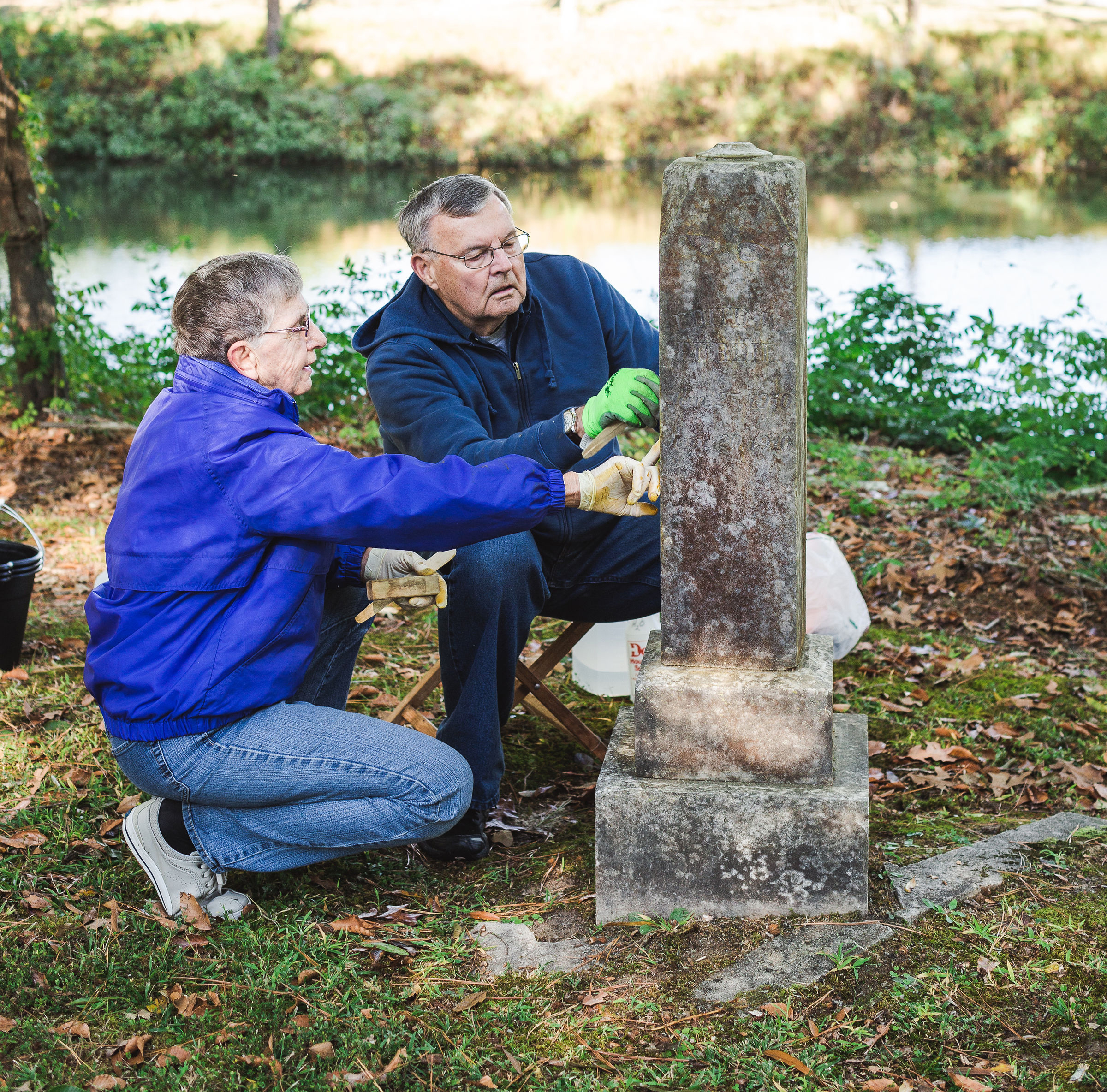
(Above) Two St. Luke’s volunteers patiently clean an historic tombstone in the Ancient Cemetery.
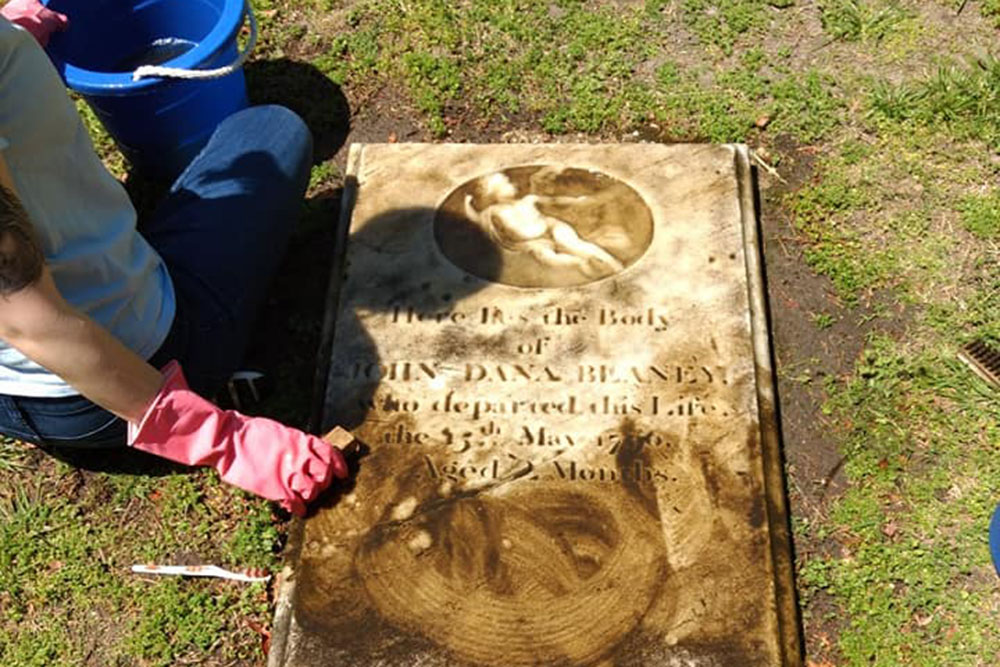
(Above) A close-up photo of a tombstone taken mid-cleaning during a Cemetery Preservation Workshop.
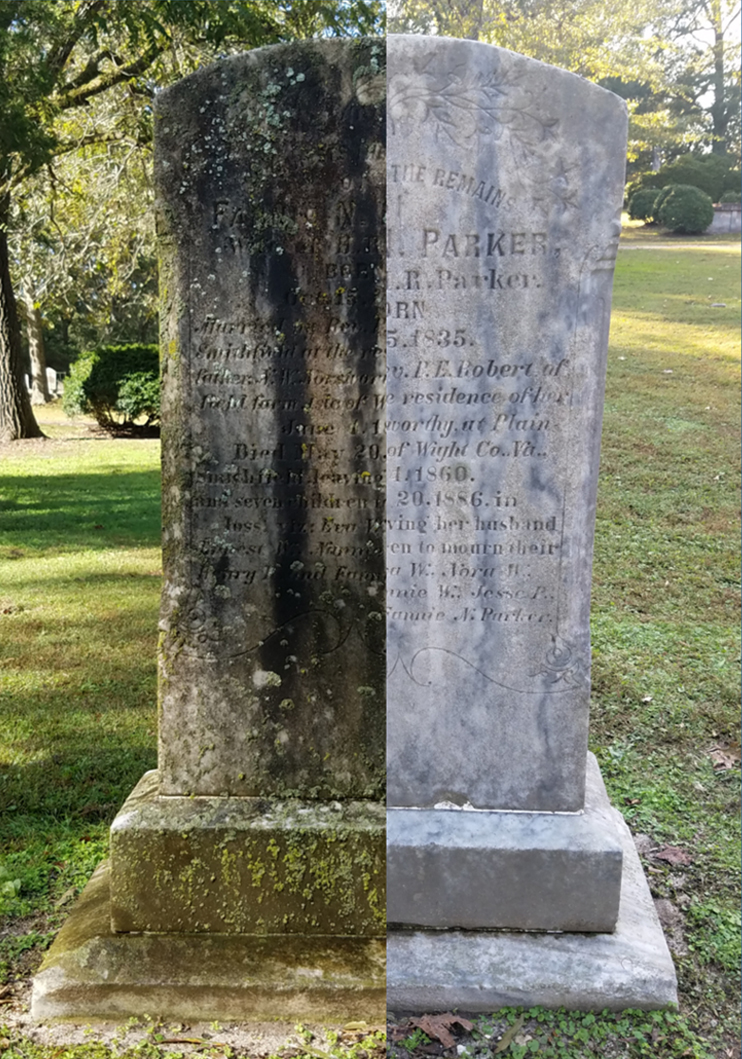
(Above) A combined photo of the same tombstone before cleaning (left) and after cleaning (right).
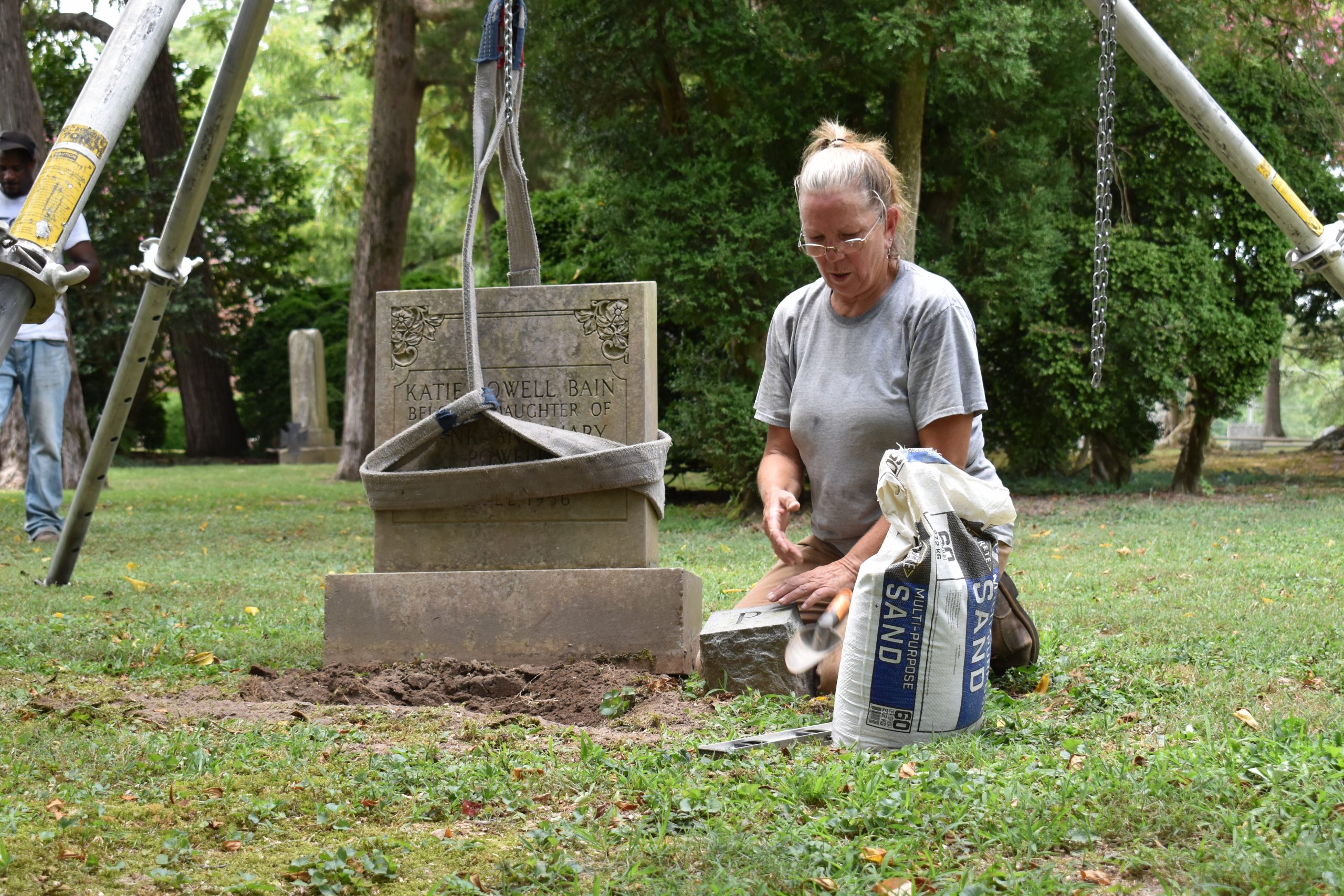
(Above) St. Luke’s staff and volunteers watch as Ta Mara Conde of Historic Gravestone Services completes expert repairs in the Ancient Cemetery at St. Luke’s.
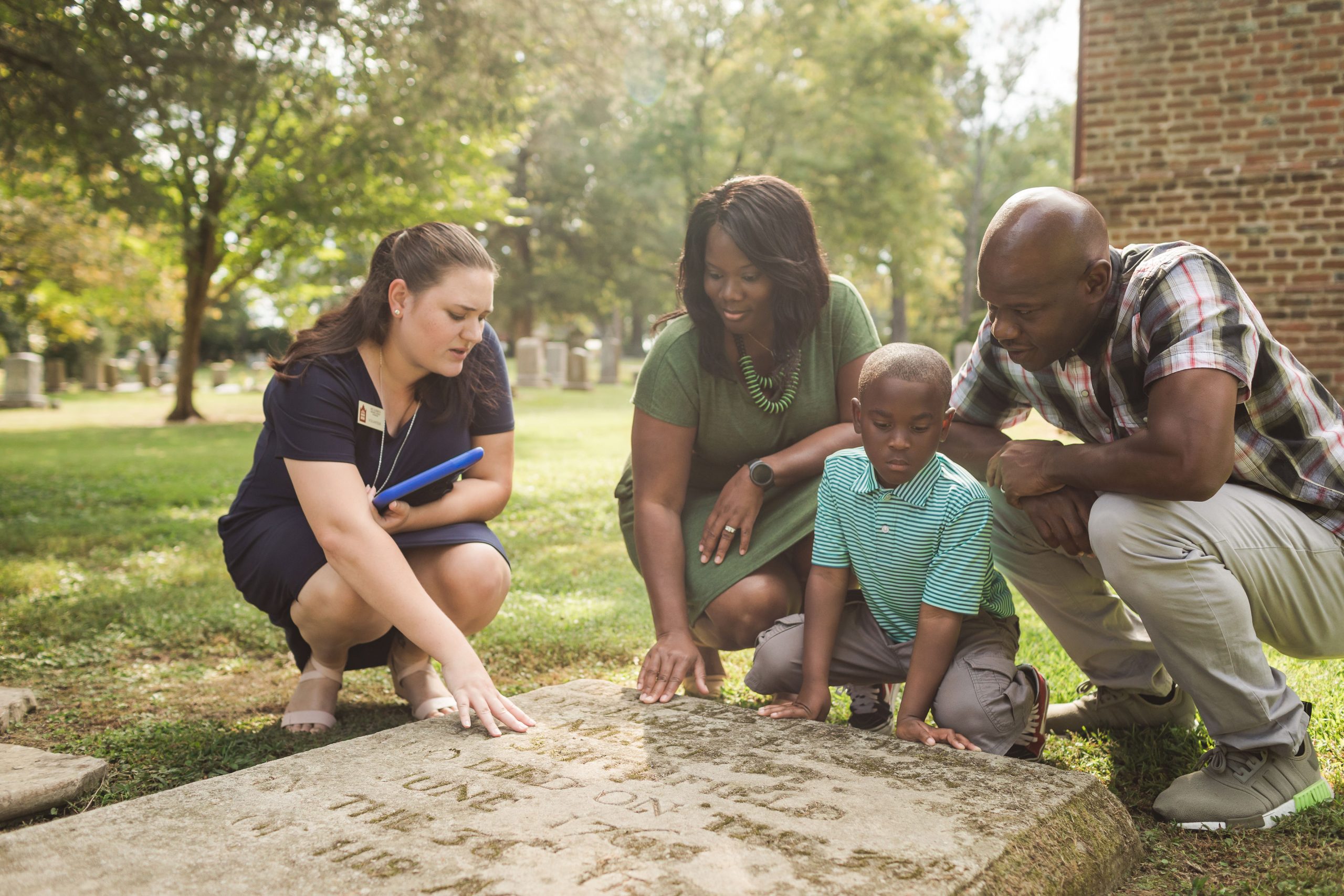
(Above) Education Coordinator Rachel Popp discusses the oldest marked grave in the Ancient Cemetery with a visiting family.
Enjoy this article? Please consider supporting St. Luke’s with a donation!
Works Referenced
Historic Gravestone Services, “About Ta Mara Conde,” http://historicgravestone.weebly.com/about-ta-mara-conde.html
Keister, Douglas, Stories in Stone: A Field Guide to Cemetery Symbolism and Iconography, 2004.
The Bullitt County History Museum, “Gravestone Cleaning and Repair,” https://bullittcountyhistory.org/cem/cleanrepair.html
There are many wonderful books, articles, and experts who can assist volunteers interested in learning more about cemetery preservation including the seasonal Cemetery Preservation Workshops held at St. Luke’s Historic Church & Museum. Please contact Education Coordinator Rachel Popp via email ([email protected]) with questions, etc. regarding cemetery preservation.
Interested in learning more? Contact us using the form below.
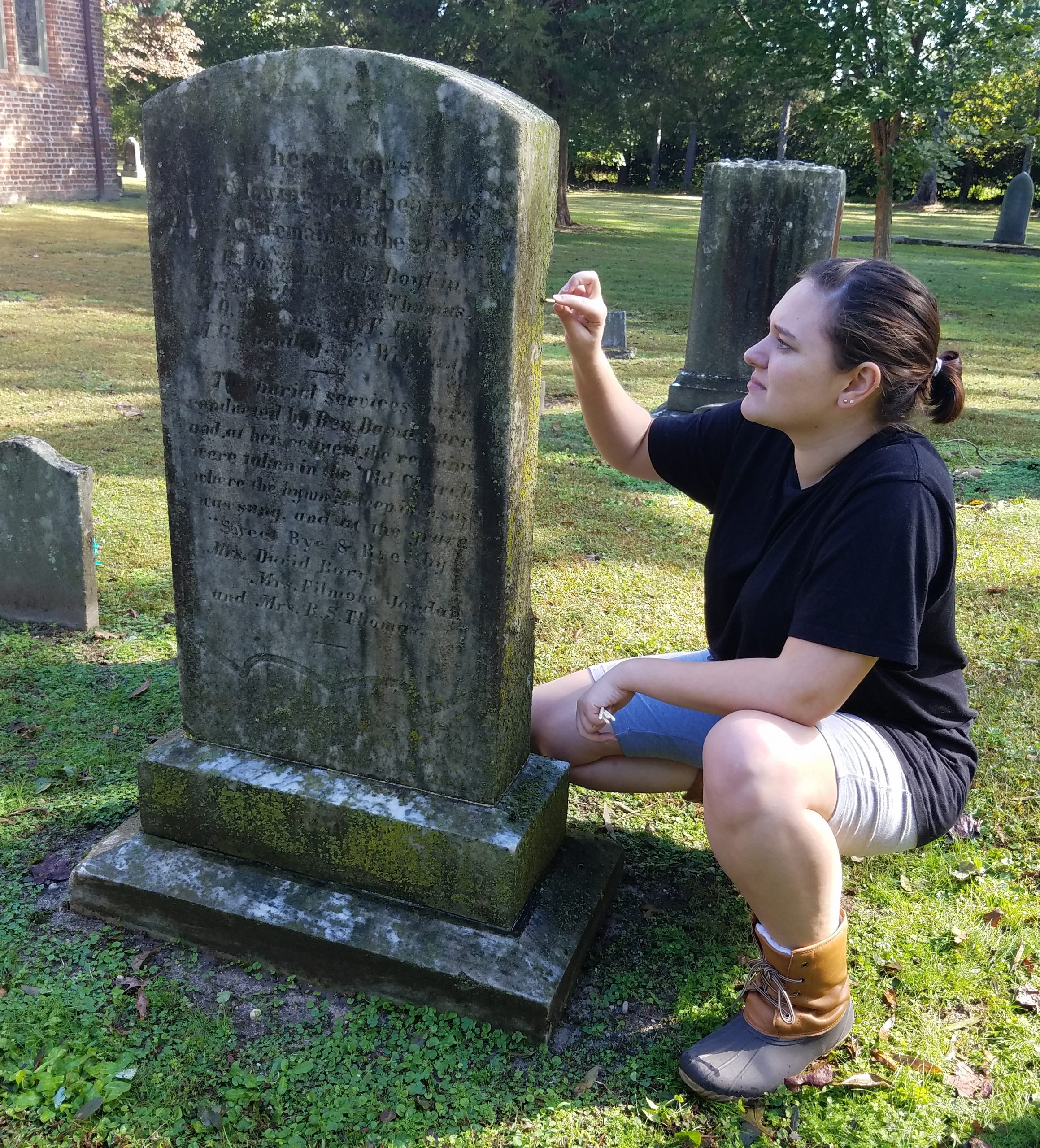
About the Author
Rachel Popp, Former Education Coordinator, worked at St. Luke’s Historic Church & Museum in some capacity since Fall 2015 when she began researching the site as a student at Christopher Newport University (CNU). At CNU, Popp studied history and minored in Childhood Studies, graduating with a Bachelor’s in History in May 2016. Rachel Popp became the Education Coordinator at St. Luke’s a few months later. She grew up in the outskirts of Virginia Beach, close to the North Carolina Border. Growing up in Virginia, a state with such a profoundly rich history, encouraged Popp’s interest in history from the time that she was young. Today, Rachel Popp spends her spare time diving deeper into the Virginia Museum Community by partnering with, and participating in, organizations such as Virginia Emerging Museum Professionals (Hampton Roads Ambassador), Peninsula Museums Forum (President), and the Virginia Association of Museums (Member).
